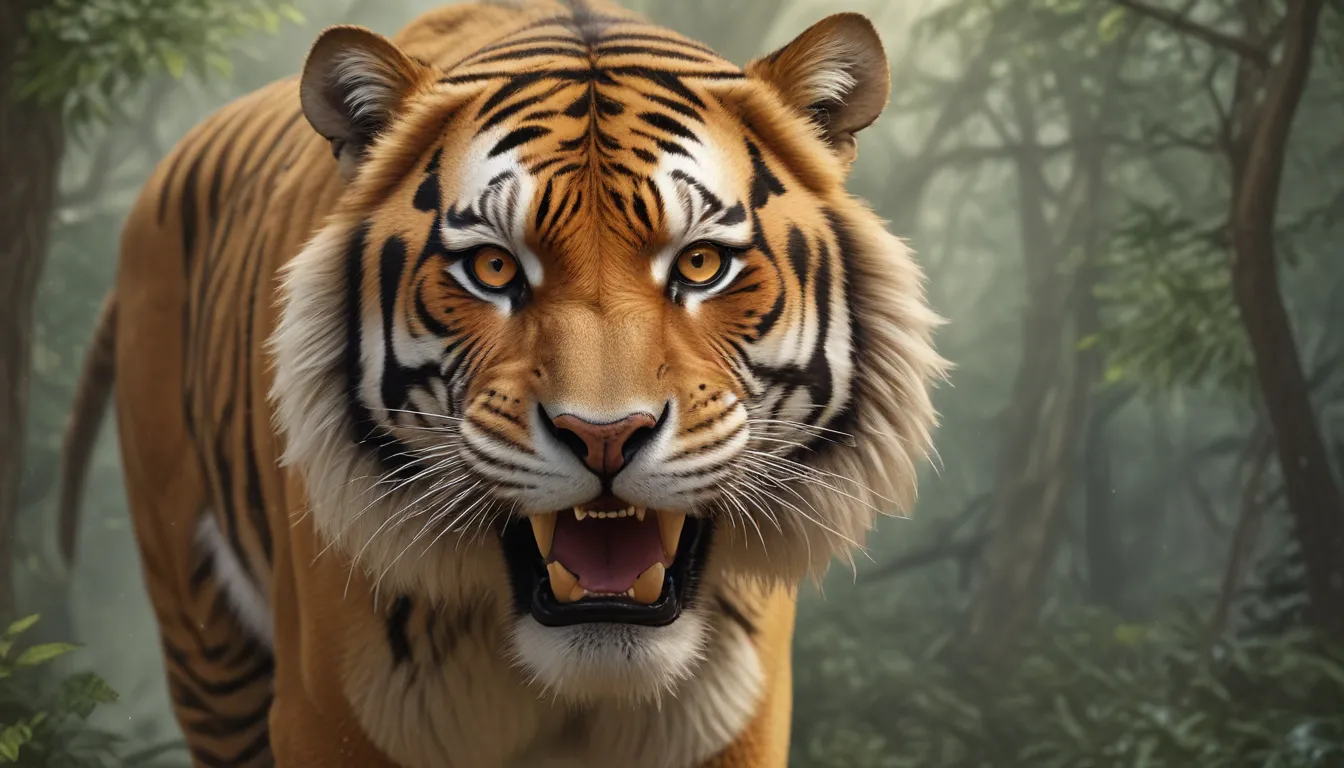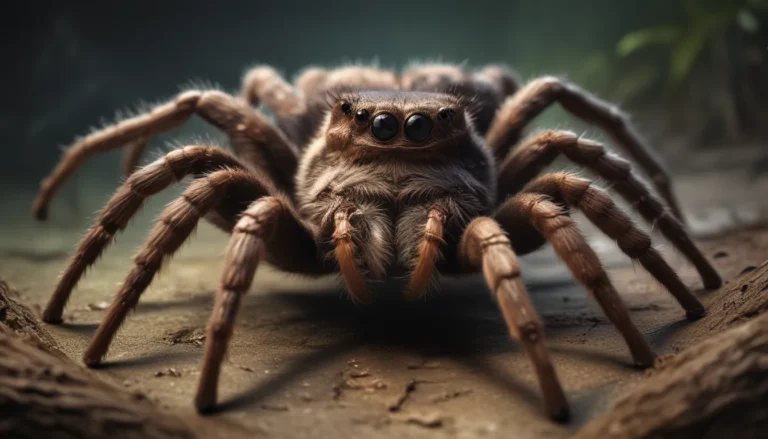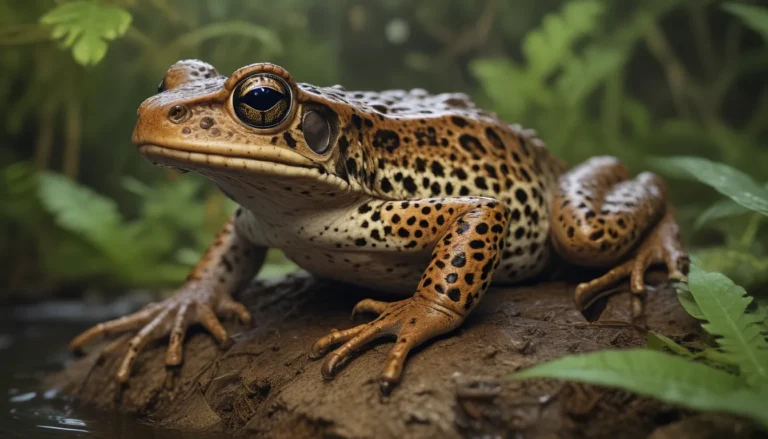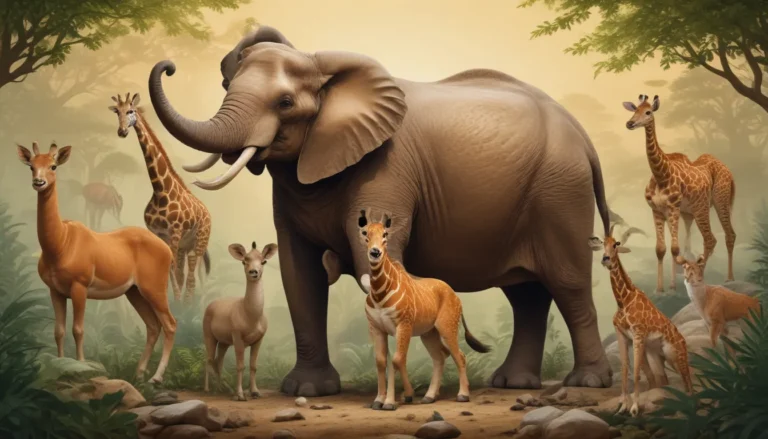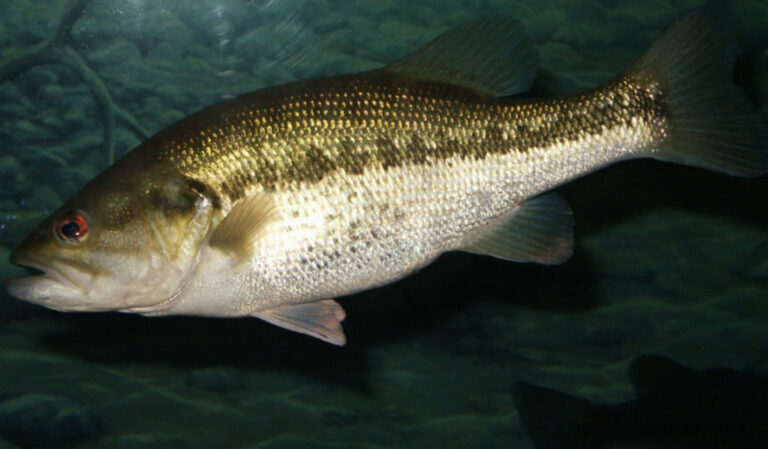The pictures we use in our articles might not show exactly what the words say. We choose these pictures to make you interested in reading more. The pictures work together with the words but don’t take their place. The words still tell you the important facts.
The saber-toothed tiger, also known as Smilodon, embodies the essence of ancient power and prowess. This magnificent prehistoric predator roamed the Earth during the Pleistocene epoch, leaving behind a legacy that continues to captivate our imaginations. Join us on a journey through time as we delve into 24 intriguing facts about the saber-toothed tiger, exploring its physical characteristics, behavior, and the environment in which it thrived. From its fearsome dental weaponry to its unique hunting techniques, the saber-toothed tiger's story is both captivating and enlightening. Let's uncover the remarkable traits and behaviors of this extraordinary predator together.
Exploring the Enigmatic Saber-Toothed Tiger
The saber-toothed tiger, or Smilodon, stands out as a fascinating prehistoric predator that once ruled the Pleistocene landscapes. This iconic creature captivates the imagination with its awe-inspiring features and formidable hunting prowess. Let's embark on a journey of discovery as we unravel the mysteries of this legendary predator through 24 intriguing facts.
Unveiling the Majestic Size of Smilodon Populator
The largest known species of saber-toothed tiger, Smilodon populator, was a colossal beast weighing an estimated 960 pounds. This impressive size contributed to its dominance as a formidable predator during the Pleistocene era, instilling fear in the hearts of its prey.
The Formidable Saber-Like Canines of Smilodon
One of the most iconic features of the saber-toothed tiger is its elongated, razor-sharp canines that could grow up to 11 inches in length. These fearsome weapons were perfectly adapted for delivering devastating bites to subdue large herbivores, showcasing the predatory prowess of this majestic creature.
Behold the Mighty Bite Force of Smilodon
With an estimated bite force ranging between 1,000 and 1,500 pounds, the saber-toothed tiger possessed an incredibly powerful weapon to pierce through the tough hides and bones of its prey. This immense force solidified its position as an apex predator, instilling awe in its peers.
The Distinctive Hunting Techniques of the Saber-Toothed Tiger
These prehistoric predators were known for employing a unique hunting strategy, using their powerful forelimbs to grapple with and immobilize their prey before delivering a lethal bite with their impressive canines. This distinctive approach set them apart from other contemporary predators, showcasing their adaptability and cunning in the wild.
Dispelling the Myth: Saber-Toothed Tigers vs. True Tigers
Contrary to their name, saber-toothed tigers were not closely related to modern-day tigers. They belonged to a distinct evolutionary lineage known as machairodonts, showcasing their unique evolutionary path and divergence from present-day felines.
Embracing a Global Legacy: Saber-Toothed Tigers Across Continents
Saber-toothed tigers were not restricted to a single region, as evidenced by their fossils discovered across various continents, including North and South America. This global distribution underscores their adaptability and successful colonization of diverse habitats, showcasing their resilience as a species.
Unraveling the Enigma of Extinction
The extinction of saber-toothed tigers remains shrouded in mystery, sparking scientific debates and speculation. Factors such as climate change, human encroachment, and competition with other carnivores have been proposed as potential contributors to their demise, highlighting the complex web of factors that shaped their fate.
Social Bonds Among Saber-Toothed Tigers
Research suggests that saber-toothed tigers may have exhibited social behaviors, living and hunting in groups similar to modern-day lions. This social structure likely played a crucial role in their hunting strategies and overall survival as a species, showcasing the intricate dynamics of prehistoric predator communities.
Pioneers of the Food Chain: Saber-Toothed Tigers as Megafaunal Predators
As megafaunal predators, saber-toothed tigers reigned supreme at the top of the food chain during the Pleistocene epoch, preying on large herbivores such as mammoths, bison, and ground sloths. Their role as dominant predators significantly influenced the ecological dynamics of ancient ecosystems, shaping the balance of life and death.
Eternalized in Art and Culture: The Iconic Depictions of Saber-Toothed Tigers
The formidable and majestic appearance of the saber-toothed tiger has etched its presence in popular culture, from literature to film, where it continues to inspire and captivate audiences. Its iconic status as a prehistoric predator stands as a testament to its enduring influence on artistic expression and storytelling.
Fossil Revelations: Unveiling Insights Through Discoveries
The discovery of saber-toothed tiger fossils has provided invaluable insights into their anatomy, behavior, and ecological interactions. These fossilized remains have significantly enriched our understanding of ancient ecosystems and biodiversity, shedding light on the intricate web of life that existed during the Pleistocene era.
Adaptable Warriors: The Impressive Adaptations of the Saber-Toothed Tiger
The physical adaptations of the saber-toothed tiger, including its robust build, powerful forelimbs, and iconic saber-like canines, exemplify the remarkable evolutionary traits that enabled it to thrive as a formidable predator in ancient environments. These adaptations showcase the ingenuity and prowess of this majestic beast in the wild.
Coexisting with Early Humans: Tales of Interaction and Conflict
Evidence suggests that saber-toothed tigers coexisted with early human populations, raising intriguing questions about potential interactions and conflicts between these two apex predators of the Pleistocene era. The shared landscapes of saber-toothed tigers and early humans offer a glimpse into a bygone era of survival and competition.
Valuable Insights from Evolutionary History
The evolutionary history of saber-toothed tigers offers valuable insights into the diverse adaptations and ecological roles of prehistoric predators, enriching our understanding of ancient ecosystems and the processes that shaped them. By unraveling their evolutionary journey, we gain a deeper appreciation for the diversity of life that once thrived on Earth.
The Quest for Knowledge: Paleontological Research Continues
Ongoing paleontological research endeavors to uncover new discoveries and insights into the biology, behavior, and extinction of saber-toothed tigers. This relentless pursuit of knowledge contributes to the evolving narrative of this iconic prehistoric predator, bringing us closer to unraveling the mysteries of their existence.
Shaping Ecosystems: The Environmental Influence of Apex Predators
The ecological impact of saber-toothed tigers as apex predators shaped the dynamics of ancient ecosystems, influencing the distribution and behavior of various species. Their presence at the top of the food chain played a pivotal role in maintaining ecological balance and shaping the landscape of prehistoric environments.
Delving into Paleoclimate Context: A Window to the Past
Studying the environmental conditions and paleoclimate of the Pleistocene era provides crucial context for understanding the ecological interactions and evolutionary pressures that shaped the adaptations and behaviors of saber-toothed tigers. This exploration of the past offers valuable insights into the ancient world in which these majestic predators thrived.
Inspiring Artistic Expressions: The Legacy of Iconic Representations
The striking appearance and formidable nature of the saber-toothed tiger have inspired a plethora of artistic representations, from intricate paleoart to captivating museum exhibits. These creative interpretations showcase the enduring legacy of this majestic predator and its significant impact on artistic imagination.
Revealing Prey Preferences: Insights from Fossil Analysis
Analysis of fossilized prey remains and dental morphology provides valuable insights into the dietary preferences and hunting strategies of saber-toothed tigers. By examining their interactions with prey species, we gain a deeper understanding of their role as apex predators in ancient food webs, unraveling the intricacies of their hunting behavior.
Cryptic Clues from Dental Microwear Analysis
Dental microwear analysis of saber-toothed tiger fossils offers valuable clues about their feeding behavior, bite forces, and ecological interactions. This microscopic examination sheds light on the subtle nuances of their diet and hunting techniques, providing a comprehensive picture of their role within prehistoric ecosystems.
Bridging Past and Present: Conservation Implications of Extinction
Studying the extinction of saber-toothed tigers and other prehistoric megafauna carries important implications for modern conservation efforts. By understanding the complex interplay of environmental changes and human impacts that led to their demise, we can better appreciate the conservation challenges faced by vulnerable species today, fostering a deeper sense of stewardship for our natural world.
The Spirit of Collaboration: Scientific Endeavors Unveiled
The study of saber-toothed tigers embodies the interdisciplinary nature of scientific inquiry, encompassing fields such as paleontology, evolutionary biology, ecology, and anthropology. This collaborative effort showcases the dedication and passion of researchers working together to unravel the mysteries of ancient life, inspiring a new generation of explorers and innovators.
Embracing the Eternal Legacy of the Saber-Toothed Tiger
The enduring legacy of the saber-toothed tiger transcends time, inspiring awe and curiosity as a captivating symbol of the ancient world. This iconic prehistoric predator serves as a testament to the remarkable diversity of life that once roamed the Earth, leaving an indelible mark on our collective imagination and understanding of the natural world.
In conclusion, the saber-toothed tiger, with its awe-inspiring features and formidable hunting prowess, continues to fascinate and intrigue us long after its extinction. By delving into the rich history and unique characteristics of this remarkable predator, we gain a deeper appreciation for the diverse and awe-inspiring world of prehistoric animals. As we unravel the mysteries of the saber-toothed tiger, we embark on a journey of discovery that illuminates the intricate tapestry of life on Earth during the Pleistocene epoch.
Unearth More Saber-Tooth Tiger Facts
Saber-toothed tigers continue to captivate imaginations with their enigmatic presence and formidable nature. If your curiosity has been piqued by this prehistoric predator, explore additional mind-boggling facts about saber-tooth tigers that shed light on their fascinating legacy and untold stories. Uncover more intriguing details about these iconic creatures and their profound impact on Earth's ancient history.
Reader Feedback: Was this Page Helpful?
Our dedication to delivering trustworthy and engaging content drives our commitment to excellence. Each fact on our site is contributed by real users like you, bringing a wealth of diverse insights and information to our community. Our rigorous editorial process ensures that every submission is meticulously reviewed for accuracy and reliability, guaranteeing that the facts we share are not only fascinating but also credible. Trust in our dedication to quality and authenticity as you explore, learn, and discover the wonders of the natural world with us.
